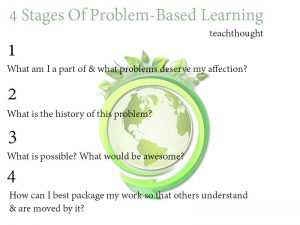
- Audience: educated, curious readers
- Length: 1500-1750 words; minimum of eight credible sources, four of which come from scholary/academic journals
- Background: St. Martin’s e-Handbook: choosing topics (12); conducting research (13); integrating sources (15)
- Grade and assessment: click here for scoring guide [TBA]
It is likely that in WRD103 you were asked to work on a textual analysis or a rhetorical analysis that looked closely at an isolated text and you interpreted it with descriptive language from that text. This  is a good intellectual exercise that will always result in a particular kind of meaning, based solely on that isolated text.
is a good intellectual exercise that will always result in a particular kind of meaning, based solely on that isolated text.
A contextual analysis is a different intellectual exercise altogether. When you put an issue into context, you can create a new kind of meaning and by putting your sources into conversation with each other, you can compare and contrast writers’ values and rhetorical strategies. The result of that intellectual exercise is that you can now tell us something we did not know about the issue before, or be able to tell us in a new way. (“Every wolf in Yellowstone therefore is more than just a wolf. Imbued with profound symbolic meaning, each wolf embodies the divergent goals of competing social movements …”)
That’s the Why; Here’s the How:
By this point in the term, you should have identified a social, cultural, or political issue from reading the New York Times that demonstrably affects you for further inquiry — what we’ll call the proximity-to-the-issue problem.
An “issue” is different than a “topic” because with an issue we can identify places where reasonable people can have different perspectives and take different rhetorical positions in debates, disagreements, differences, and controversies; an issue is debatable, and a topic is not. One good sign that your issue is debatable is the existence of conflicting claims.
Your challenges for this project are to [1] first spend some time in inquiry mode, asking questions — to whom does this issue matter? Why? What is interesting about it? What is the real, actual, genuine exigency? What is at stake? What does your initial research reveal? — [2] to research more in depth, comparing and contrasting the sources you find interesting [3] to compose your contextual analysis based on your research.
Your Contextual Analysis Essay will include:
- An introduction in which you introduce the issue to readers, describing why it is an important and timely issue, and to whom it matters
- The main body of your essay collects, analyzes, synthesizes, and contextualizes sources via your critical and rhetorical methods of summary and rhetorical analysis; this is where you inquire into writers’ values, and put them into conversation with each other
- Your conclusion answers the “so what?” question? Based on your analysis, what really seems to be at stake? The assumption here is that your analysis of writers’ values and rhetorical strategies can tell us something about the issue that we did not know before, or that you can tell us in a way that we have not heard before. “Every wolf in Yellowstone therefore is more than just a wolf …”
A More Exploratory Option?
Writing to understand
Often, a writer must enter into conversation with others and collaborate in seeking the best possible understanding of a problem, exploring all possible approaches and choosing the best alternative. The Rogerian and invitational forms of argument both call for understanding as a major goal of arguing. Argument to understand does not seek to conquer or control others or even to convince them. Your purpose in many situations—from trying to decide which job to pursue to exploring with your family the best way to care for an elderly relative—will be to share information and perspectives in order to make informed political, professional, and personal choices.
Writing to change yourself
Sometimes you will find yourself arguing primarily with yourself, and those arguments often take the form of intense meditations on a theme, or even of prayer. In such cases, you may be hoping to transform something in yourself or to reach peace of mind on a troubling subject. If you know a familiar mantra or prayer, for example, think of what it “argues” for and how it uses quiet meditation to help achieve that goal.
Recent examples:
- What is an immigrant?
- What is happiness?
- Is there such a thing as a suburban ethos?
- Where does confidence come from? Be sure to click on Brooks’s first link, to “The Confidence Code”: “In studies, men overestimate their abilities and performance, and women underestimate both. Their performances do not differ in quality.”
- What is the “middle class”?
- What is feminism? Are you one?
- What is empathy?
- What is the relationship between art and fashion?
- What is the history of Pilsen and how is it usually reflected in histories of Chicago?
- What is privacy?
- What is the purpose of college?

